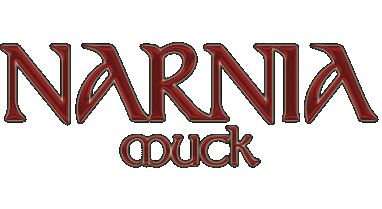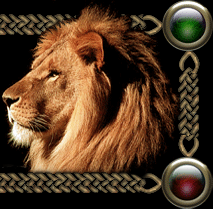Feaelin's Blog: Narnia's G Rating
Narnia MUCK has its own philosophies, its own way of doing things. Some of them are surprising to some mu*ers1. Some might not. One philosophy that surprises some newcomers to NarniaMUCK is our strong desire to keep the role-play G rated...
I thought it might help with understanding the idea to explain some of the reasons behind it.
I feel that the most important reason is our strong desire for Narnia MUCK to be a friendly, safe, and comfortable place to play for everyone, regardless of their age, regardless of their social background.
We allow any age of player to play, the only real requirement is the ability to read, compose, and type at a reasonable level. This means that some players are under the age of 13, some are in the younger young adult group, some are in the older young adult group, and then the rest of our players are adults (i.e., over 18 or 21 depending on your local laws). Right now, I can't estimate (much less report with any accuracy) how many players we have in each age category but I know we have at least few in each. And of course, the numbers constantly change anyway.
The presence of the under 13s means "keeping it clean" is required both in an ethical sense AND a legal sense. Any role-play, background stories, foreground stories, or game mechanics that are graphically/luridly violent, sexually explicit, or deal with socially sensitive topics are not appropriate for that age group.
To a slightly lesser degree, those kinds of things are also inappropriate for the "younger young adult" (early teen) age group. For the "older young adult" (older teen) age group, some things might be socially acceptable. What is and isn't depends the individual and their parents.
To be clear, when I say that these topics are inappropriate, I really mean that it is inappropriate for Narnia MUCK to expose the relevant age groups to them. When to discuss sensitive topics is a decision for parents, not the staff of Narnia MUCK, and not the players of Narnia MUCK. It is challenge enough already for parents to decide when to protect their children and when to educate them on the realities of world, we're not going to make it harder by preempting them. They're going to have first hand knowledge of their child's social maturity and will be able to assess what to share with them in a way that is impossible for us.
"Regardless of social background" is trickier to explain, but I'll try anyway. Some players may be uncomfortable with graphically violent, sexually implicit, or other sensitive topics. The reasons for that are going to vary person-to-person, entirely dependent on their upbringing, religious beliefs, and life experiences. A given player might think such things are offensive, or maybe just gross, or perhaps too ugly/unpleasant for their play time. Regardless of the reasons, including such content may be unpleasant, uncomfortable, disturbing, or unsafe-feeling for some players.
And the goal here is to write exciting stories with the players as the participants and have fun doing it. And if things are freaky (in the negative sense) for a player, they're not going to have fun. Everyone needs to feel comfortable and safe before they can relax and enjoy the moment.
That covers our first reason2. The second reason I have for you is that most or all of these kinds of topics are not in theme and/or not canon.
Bear in mind that the theme and setting of Narnia MUCK role-play is the theme and setting of the books. It is easy to describe the theme with terms like fantasy, medieval, talking animals, low magic, and so on. But those kinds of terms are not the whole theme.
The theme also exists the special space that a particular sub-genre of fiction exists in. A space where good (in the end, after a series of challenges, personal and public) always triumphs over evil. A space where parents have children but the mechanics of it are never explained or if they are its things like "Hey kids, look what I found under a cabbage leaf this morning". Where children have grand adventures with seemingly high risks--but it turns out all right in the end. Where often, the villains when defeated might say things like "and I would have gotten away with it too, if it hadn't been for these meddling kids!".
There are many books that I have read and enjoyed in that space. The Narnia Chronicles themselves are an obvious inclusion on the list, but there are many others, such as Lloyd Alexander's Prydain Chronicles, books by E. Nesbit3 4, Trixie Belden Mysteries, Boxcar Children, Five Little Peppers, I can probably go on for a while here.
The racy and edgy stuff belongs somewhere else. Other books, other mu*s, other shows, other games. It doesn't belong on Narnia.
- 1. Generically, multi-user text based games following the TinyMUD example are called muds. The broader category is divided into terms like mushes, mucks, muqs, moos, lpmuds, dikumuds, abermuds, etc. MU* is a term intended to be all inclusive of all variants of mud/muck/mush/muq/etc.
- 2. Or perhaps first two reasons, depending on how you like to divide things up.
- 3. Some of her works are now in public domain. Go to http://www.gutenberg.org and author search for her.
- 4. My personal favorite is 'Five Children and It'.
- Feaelin's blog
- Login to post comments



Comments
Is there any simple way to
Is there any simple way to judge, when composing a pose that, for instance, ICly describes an act of hunting, what is or isn't too graphic?
If it doesn't, for instance, make any mention of blood, does that suffice to safely stay within the bounds?
We've not come up with a way
We've not come up with a way to delineate what is acceptable violence and what isn't. You've hit upon a key difference--that descriptions of what happens to anything inside the body (blood, organs, etc.) when someone is wounded is definitely out.
There are other things that are unacceptable violence as well. For instance, it is a popular theme for movie villains to randomly kill their subordinates, torture their prisoners, and so on. The former is both bad writing1 and excessively violent. Torture, on the whole should be avoided and if present, should be spoken of in very general terms. For example..."They treated him most horribly, they did! I dread to even think about what mean things they did to him!". Leave it up to the reader's imagination. Some (primarily adults) will interpret this to mean actual violence; a younger or more innocent audience might imagine something like "They ate Turkish Delight2 in front of him but didn't share any of the sweets with him." Hmm. That's cruel and unusual, right there. Sounds like perfect villain stuff to me.
I'd err on the side of caution. Think twice about violence--is it really the best story for the situation? There are many tools in a villain's hands--willingness to commit violence is only one of them.
She did spend a brief period
She did spend a brief period in our world, and I wonder sometimes about her abilities to specially know people's weaknesses. But yes, it's an interesting dilemma. Interestingly, Aslan is Turkish for Lion?
I actually seemed to recall
I actually seemed to recall asking the very question of how Jadis would know what a Turkish delight is. I thought, perhaps, her wicked magic might have pulled it from Edmund's mind. I think the majority response I got on the MUCK, though, was that she had learned about them from when she herself was in London.
Sparring
I feel like I should point out that one of the combat messages (goring) involves blood splattering and the skewering of a target.....not very pleasant when it's an animal that becomes a shish-kabob in the midst of a sparring match.